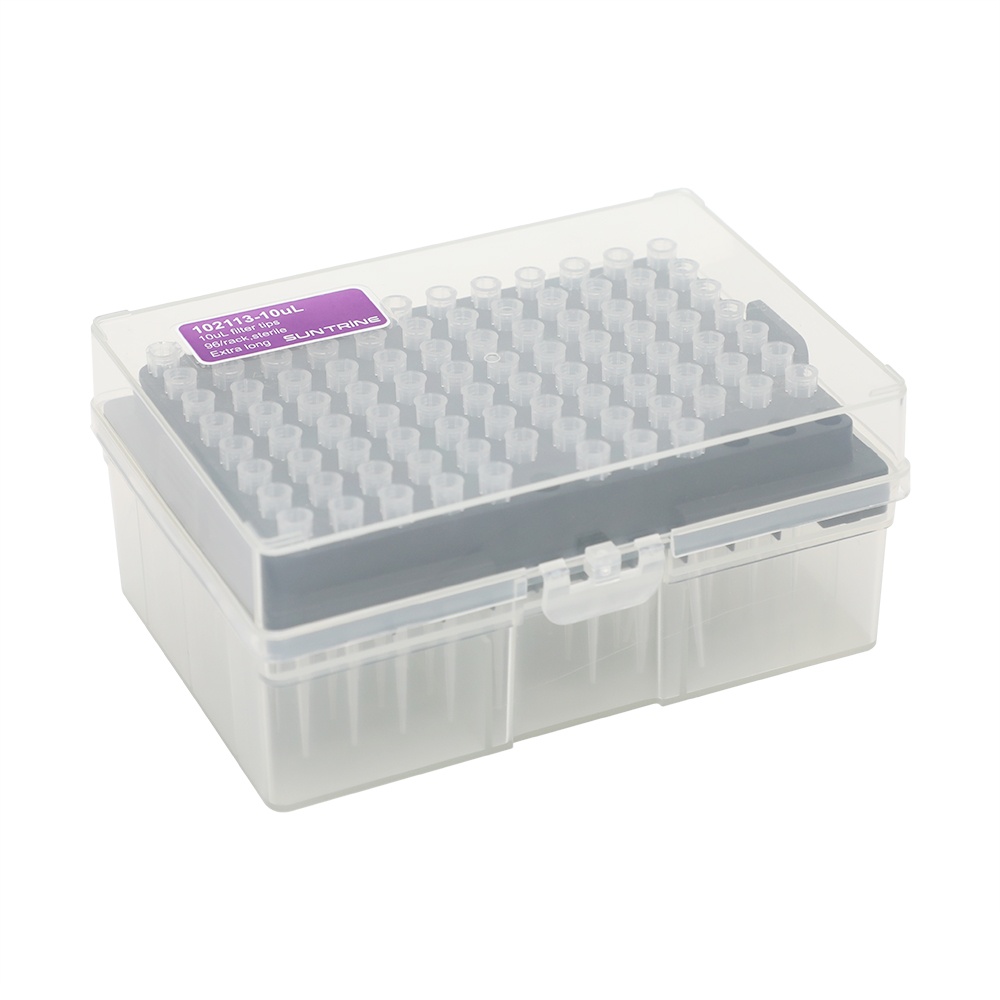Introduction
In laboratories, accuracy and precision are vital when handling various samples or solutions. Filtered pipette tips serve as essential tools in preventing contamination and maintaining sample integrity during pipetting procedures. This article explores the considerations and limitations when using filtered 1-1000 ul pipette tips with different sample types, shedding light on their importance and challenges.

Understanding Filtered 1-1000 ul Pipette Tips
Filtered pipette tips incorporate barriers or filters to prevent aerosols and potential contaminants from entering the pipette shaft. In the 1-1000 ul volume range, these tips offer flexibility in handling diverse sample volumes accurately and efficiently. The filtration mechanism plays a critical role in safeguarding samples from contamination during pipetting processes.
Considerations for Specific Sample Types of filtered 1-1000 ul pipette tip
- Biological Samples
Biological samples, including DNA, RNA, or proteins, demand stringent handling to prevent contamination and degradation. Filtered tips mitigate the risk of cross-contamination and maintain the integrity of these delicate samples, ensuring accurate analysis in molecular biology applications.
- Viscous Solutions
Viscous solutions present challenges due to their consistency, affecting pipetting accuracy. Filtered tips with wider orifice openings facilitate smoother pipetting, reducing the risk of sample retention and ensuring precise volume delivery even with viscous substances.
- Volatile or Hazardous Chemicals
When dealing with volatile or hazardous chemicals, filtered tips act as a barrier against exposure and contamination. They help maintain a safe working environment by preventing accidental contact with harmful substances, enhancing lab safety protocols.
- Low-Volume Samples
Pipetting low volumes accurately is critical in applications like genomics or drug discovery. Filtered tips ensure precise handling of minute quantities, reducing sample wastage and maximizing efficiency in handling low-volume samples.
Limitations and Constraints of filtered 1-1000 ul pipette tip
- Compatibility Issues
Filtered tips might face compatibility issues with certain sample types or solutions. In some cases, highly viscous or dense samples may obstruct the filtration mechanism, affecting pipetting accuracy and efficiency.
- Specific Sample Preparations
Samples prepared in certain solvents or buffers might interfere with filter functionality. Viscosity, density, or the presence of particles might hinder proper filtration, leading to potential limitations in accuracy.
Best Practices and Recommendations of filtered 1-1000 ul pipette tip
Accurate and reliable results in laboratory experiments heavily rely on proper pipetting techniques and choosing the right tools. Consider the following best practices and recommendations to optimize the use of filtered 1-1000 ul pipette tips across different sample types:
- Understanding Sample Properties:
Conduct a thorough assessment of the sample's characteristics, including viscosity, density, and presence of particulates.
Tailor pipetting techniques based on sample properties to ensure compatibility with filtered tips.
- Selecting Appropriate Tip Materials:
Consider using filtered tips made from materials compatible with various sample types. Different tip materials offer varying degrees of chemical resistance and compatibility.
For specific applications, such as working with aggressive chemicals or biological samples, choose filtered tips made from inert materials to prevent sample interaction.
- Compatibility Validation:
Perform compatibility tests between filtered tips and sample solutions prior to extensive use.
Verify that the filtered tips effectively prevent sample contamination or interference while maintaining accuracy during pipetting.
- Pre-cleaning Techniques:
In scenarios where sample characteristics might obstruct filtration, pre-cleaning techniques can be applied. These may include centrifugation or filtration of samples before pipetting to remove particulates or debris that could hinder the filter's functionality.
- Routine Maintenance and Calibration:
Ensure regular maintenance and calibration of pipettes and pipette tips to uphold accuracy and precision in sample handling.
Regularly inspect the filtered tips for signs of wear, damage, or clogging, and replace them when necessary to maintain optimal performance.
- Proper Technique Implementation:
Adhere to recommended pipetting techniques, such as maintaining a consistent pipetting speed and avoiding excessive pressure during sample aspiration and dispensing.
Use the correct pipetting angles and depths to ensure the accurate uptake and release of samples without compromising filter integrity.
- Quality Control Measures:
Implement robust quality control procedures to validate the reliability and effectiveness of filtered tips in preventing contamination.
Regularly monitor pipetting accuracy by using control samples and verifying the consistency of results obtained with filtered tips.
By adhering to these best practices and recommendations, laboratories can enhance the effectiveness and reliability of using filtered 1-1000 ul pipette tips across a spectrum of sample types. Understanding sample properties, selecting appropriate materials, conducting compatibility tests, and maintaining proper technique implementation are pivotal in ensuring accurate and contaminant-free pipetting procedures.
Conclusion
Filtered 1-1000 ul pipette tips play a pivotal role in maintaining sample integrity and reducing contamination risks across various sample types. Understanding the considerations and limitations while using these tips enables laboratories to make informed decisions, ensuring accurate and reliable results in scientific experiments and analyses.
Related Products




